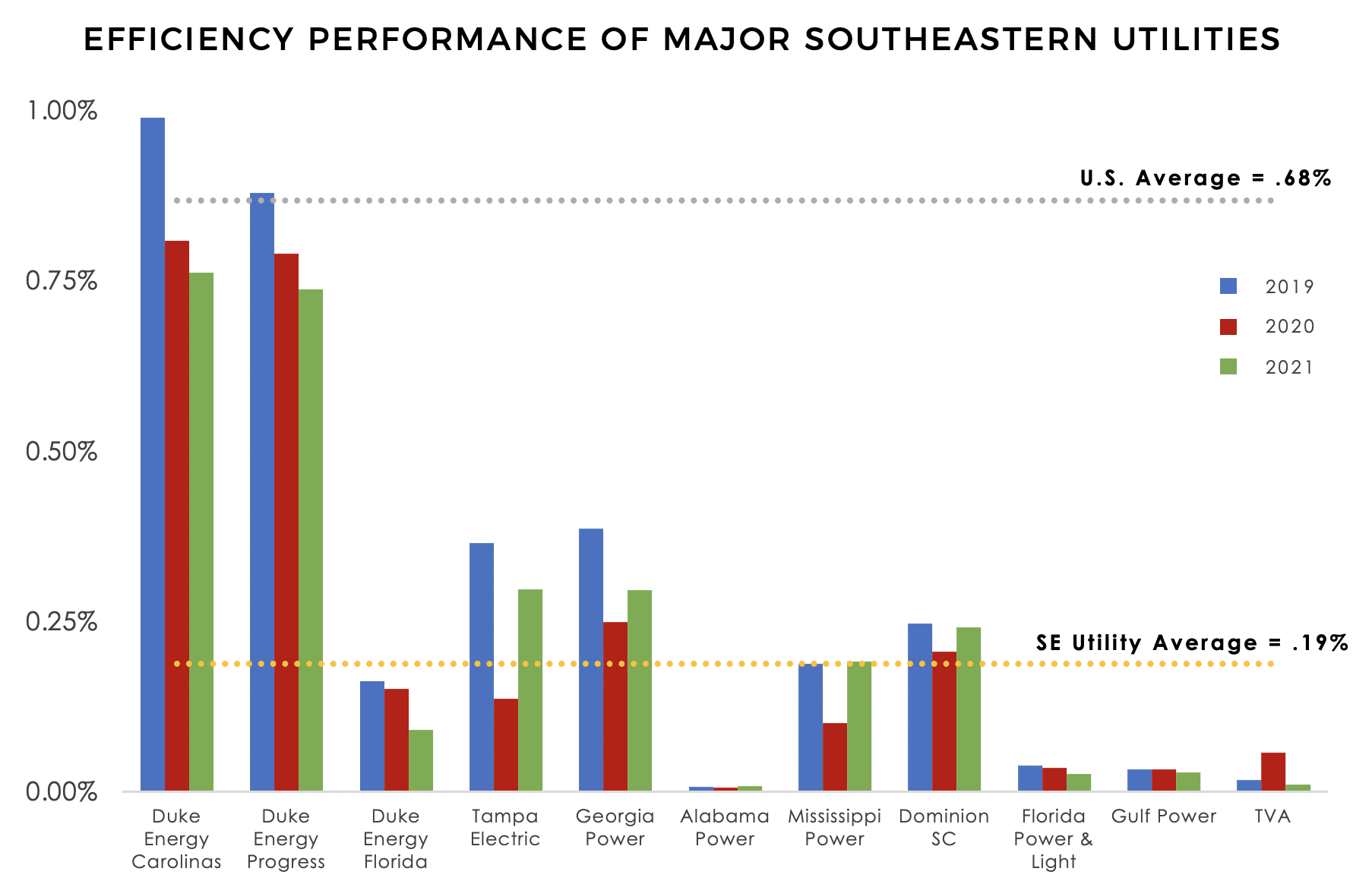TVA’s recent announcement that it will spend $1.5 Billion on energy efficiency and demand management over the next four years may be an important first step, marking a major transition for the utility after years of inadequate investment and soaring residential electricity use.
Stephen Smith | November 17, 2023 | Energy Efficiency, Tennessee, UtilitiesSACE Energy Efficiency Director Forest Bradley-Wright contributed to this post
On October 2nd 2023, the Tennessee Valley Authority (TVA) announced that it was relaunching energy efficiency rebate programs for customers, five years after eliminating all of its previous efficiency rebate offerings. This marks the beginning of what we hope will be a new and better chapter for efficiency in the Tennessee Valley, with lower customer energy bills and less justification for construction of new fossil fuel power plants.
Historical Context
TVA was once a leader among Southeastern utilities in how it evaluated efficiency resources to meet future energy demand through a process called integrated resource planning (IRP). In both 2011 and 2015, TVA’s IRPs included significant increases in energy efficiency. But actual performance fell far short of plans. Then in 2018 the utility discontinued all of its customer efficiency rebate programs, leaving only minimal funding for efficiency upgrades in low-income homes.
The following year, TVA’s 2019 IRP (their most recent) essentially eliminated energy efficiency as a resource. The utility’s stated rationale was that Department of Energy codes and standards had reduced electricity demand, thereby making utility efficiency programs unnecessary. This position is inconsistent with the majority of major peer utilities that continue to prioritize efficiency in resource planning, recognizing energy efficiency as a least-cost energy resource.

Efficiency Performance Comparison
Since 2017, TVA’s already modest annual efficiency performance has fallen 95%, putting the utility at the bottom of national rankings. By 2021, TVA’s efficiency performance was just 0.01% of its annual retail electric sales. To put this in context, the national average that year was 0.68%…in other words 68 times higher.
Underinvestment in energy efficiency drives up electricity consumption, and in 2021 residential customers in Tennessee used 34% more electricity than the national average – the second highest in the country (behind Louisiana).
Overconsumption, in turn, leads to unaffordable energy bills and increases utility system vulnerability to widespread power outages during severe weather, like those experienced during Winter Storm Elliott in December 2022. Even compared to other utilities in the Southeast (which as a group trail far behind utilities in other regions), TVA has consistently ranked near or at the bottom.

It is an age old adage that when you are on the bottom, the only way to go is up – which certainly was the case when TVA recently announced its commitment to reinvesting in efficiency.
TVA’s $1.5 Billion Announcement – What We Currently Know
On October 2nd, 2023 (National Energy Efficiency Day!), TVA announced that it will spend $1.5 billion on energy efficiency and demand management over the next four years. This is a significant step in the right direction, both for helping to cut customer energy bills and reduce the need to build new fossil fuel power plants to meet growing electricity demand.
On TVA’s webpage, many new incentive programs are now available for residential and business customers. These include, for example, rebates for home heating and air conditioning, insulation, and air sealing. Similar measures qualify for rebates for businesses, along with incentives for commercial refrigeration, lighting systems, and industrial processes.
TVA currently estimates that energy efficiency will be able to meet 30-40% of its forecasted load growth. Over the next year TVA expects to save 319 GWh with energy efficiency, rising to 500 GWh a year by 2026. This equates to roughly 0.21% annual savings next year rising to 0.32% starting in 2026. This is quite a jump from 2021, when TVA achieved just 0.01% savings, though it is still less than a third of the national average for utility energy efficiency savings.
Notably, if TVA continued to increase its efficiency savings up to the national average, it is feasible that efficiency could actually meet the vast majority of TVA’s projected future load growth – without the need to build new fossil fuel power plants.
Frustrated by TVA on again off again commitment to efficiency and wanting to verify some of their claims given a track record half-truths and misinformation we requested TVA respond in writing to a series of questions. With other large utilities in the region these programs would be shared and debated in front of a state regulatory commission giving interested parties a clear understanding of the utilities programs, TVA being a self-regulated monopoly has no review process. We were able to receive the questions and were generally favorable to their responses linked here and here.
Next year, TVA will file its next integrated resource plan. If it allows energy efficiency to once again compete against potential new power plant additions, it is very possible that efficiency will prove to be the less expensive resource – thereby justifying even more than the $1.5 billion in efficiency spending TVA has committed to publicly.
Looking Forward
This appears to be the start of a new and better chapter for energy efficiency at TVA, one we hope will live up to the promise of the moment. There is no denying that for the first time in many years TVA is a utility to watch for energy efficiency growth in the Southeast, which is a truly refreshing change of pace for a major utility in our region!